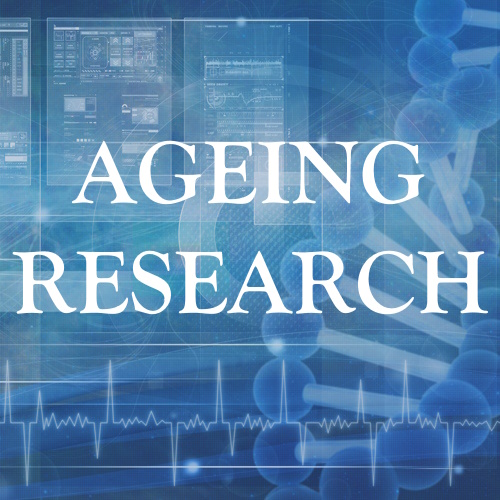Humanity has long sought to slow ageing. Advances in genetics and molecular biology have shown that ageing is not an entirely random decline, but instead influenced by conserved biological pathways. Caloric restriction, reducing energy intake without malnutrition, is one of the most powerful interventions known to extend lifespan in diverse organisms. Yet, the molecular players behind this phenomenon are still being unravelled.
A new study published in Aging (2025) provides compelling evidence that a gene called sesn-1, the worm version of the Sestrin family, plays a central role in mediating the benefits of caloric deprivation. By studying the nematode Caenorhabditis elegans, researchers found that sesn-1 promotes longevity by turning down the activity of the nutrient sensor mTORC1 and switching on the protective process of autophagy.
The Sestrins: Guardians of Cellular Stress
Sestrins are a family of stress-responsive proteins. Vertebrates such as humans have three genes, SESN1, SESN2, SESN3, while invertebrates like C. elegans possess a single version, sesn-1.
These proteins are switched on by cellular stress — including DNA damage, oxidative stress, or nutrient shortage. Importantly, Sestrins interact with critical signalling molecules like p53, FOXO, and NRF2, all of which are central players in ageing and disease.
Over the past two decades, Sestrins have emerged as metabolic regulators. They suppress the nutrient sensor mTORC1, activate autophagy, and help maintain redox balance. In flies and mice, manipulating Sestrins alters susceptibility to age-related disorders such as muscle degeneration and heart problems. This evolutionary conservation suggested a crucial role in lifespan regulation.
Caloric Restriction and Longevity
Caloric restriction (CR) is perhaps the most consistent intervention shown to extend lifespan across species, from yeast to primates. In nematodes, removing food or impairing feeding can dramatically lengthen lifespan.
The underlying reason links back to nutrient sensing. When cells detect fewer nutrients, they suppress growth pathways like mTORC1 and activate maintenance pathways such as autophagy. Autophagy clears damaged proteins and organelles, improving cellular health. The balance between growth and repair strongly influences ageing.
Thus, researchers hypothesised that Sestrins — as regulators of mTORC1 and autophagy — might be key mediators of caloric restriction’s effects.
Testing the Role of sesn-1 in Worm Lifespan
The team examined C. elegans worms with normal sesn-1 and worms carrying deletions in this gene. Under normal feeding conditions, mutant worms lived only slightly shorter lives. But when food was restricted, the difference was striking:
Wild-type worms extended lifespan by about 40%.
sesn-1 mutants extended lifespan by only 6%.
This revealed that sesn-1 is indispensable for the full benefits of caloric deprivation. Without it, worms could not mount the adaptive response that prolongs life.
Stress Resistance: Beyond Longevity
Longevity is not the only measure of healthy ageing. Resilience against stress is equally vital. Researchers exposed worms to oxidative stress using hydrogen peroxide and paraquat.
Wild-type worms resisted damage better.
sesn-1 mutants died faster under stress.
Similarly, in nutrient-free medium, wild-type larvae survived longer than mutants. These findings confirm sesn-1 is a guardian of stress resilience, not just lifespan.
Linking sesn-1 to Autophagy
To probe mechanism, the team tracked autophagy using GFP-labelled LGG-1, a worm protein marking autophagosomes.
Wild-type worms under starvation showed strong autophagosome formation.
sesn-1 knockdowns showed only modest increases.
Further biochemical analysis showed that starvation reduced phosphorylation of ribosomal protein S6 — a sign of mTORC1 inhibition — in wild-type worms but not in sesn-1 mutants.
Together, these results demonstrate that sesn-1 drives autophagy by repressing mTORC1 during food scarcity. Without sesn-1, worms fail to switch into repair mode effectively.
Muscle Integrity: A Longevity Factor
In both flies and mammals, Sestrins help preserve muscle function with age. To see if this holds in worms, researchers used strains with fluorescently labelled muscle nuclei.
In young worms, muscle density was similar regardless of sesn-1.
In older adults, sesn-1 knockdowns showed pronounced muscle loss.
This suggests sesn-1 is vital for sustaining muscle integrity during ageing. The connection between autophagy and muscle maintenance is particularly relevant, given human conditions like sarcopenia.
The GATOR2 Connection
How exactly does sesn-1 communicate with mTORC1? Previous mammalian studies revealed Sestrins interact with the GATOR2 complex, a key regulator of amino acid sensing.
When researchers silenced worm GATOR2 components (npp-18 and Y32H12A.8), sesn-1 could no longer extend lifespan during caloric deprivation. Autophagy was also impaired under these conditions.
This shows that sesn-1 acts through GATOR2 to modulate mTORC1, highlighting a conserved molecular dialogue from worms to humans.
Interplay with FOXO and eat-2 Mutants
The insulin/IGF-FOXO pathway is another major regulator of longevity. Worms lacking the insulin receptor daf-2 live longer, while FOXO (daf-16) is required for many lifespan-extending interventions.
Researchers examined whether sesn-1 intersects with these pathways. Results suggest sesn-1 has modest synergy with daf-16, but the connection remains complex.
They also studied eat-2 mutants, worms with impaired feeding that mimic chronic caloric restriction. In these mutants, sesn-1 presence further boosted lifespan, confirming its role as an enhancer of nutrient-sensing longevity responses.
A Central Node in Ageing Control
The study paints sesn-1 as a central integrator of nutrient stress, autophagy, and longevity. Its absence does not entirely block caloric deprivation’s benefits, but it sharply blunts them.
This aligns with evidence from flies and mammals, where Sestrins regulate metabolism, protect against muscle decline, and respond to branched-chain amino acid restriction. The conservation across species underscores the evolutionary importance of this mechanism.
Implications for Human Ageing
While worms are far removed from humans, the pathways are surprisingly conserved. Humans also rely on Sestrins to sense nutrients and regulate mTORC1.
Drugs like rapamycin, which inhibit mTORC1, extend lifespan in mice.
Sestrins may represent a natural, endogenous brake on mTORC1.
Harnessing this system could provide new therapies for age-related diseases — from neurodegeneration to diabetes. Instead of broadly shutting down mTORC1 with drugs, targeting Sestrins could offer more subtle, physiologically tuned interventions.
Challenges and Future Directions
Despite strong findings, open questions remain:
Tissue specificity — Does sesn-1 act primarily in muscle, neurons, or gut?
Hormesis — Does sesn-1 mediate beneficial stress adaptation at low levels?
Post-transcriptional regulation — Why do mRNA and protein levels diverge during stress?
Future research may involve tissue-specific knockdowns, longitudinal imaging of autophagy, and studies in mammals.
Conclusion: The Sestrin Promise
Ageing is not governed by a single clock but by the balance between growth and repair. Sestrins, particularly sesn-1 in worms, tip the scale towards repair during times of scarcity.
By repressing mTORC1 and promoting autophagy, sesn-1 ensures that cells survive stress and tissues maintain function. This work adds an essential piece to the puzzle of how caloric restriction extends life.
In the long run, unlocking the secrets of Sestrins may help design therapies that mimic fasting’s benefits without the hardships of actual deprivation. For humans, that could mean not just longer life, but healthier years.
The study is published in the journal Aging. It was led by Andrei O. Zheltukhin from Russian Academy of Sciences.

/calorie-restriction-cr-thumbnail.jpg)

/sesn-1-helps-worms-live-longer-by-switching-off-growth-signals-and-activating-cell-repair.jpg)


